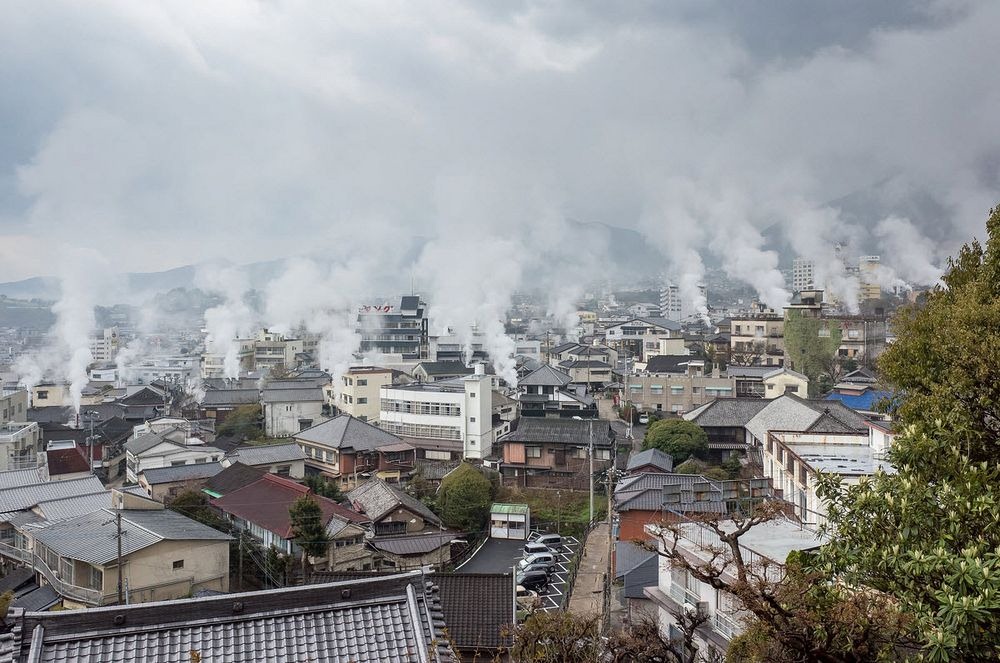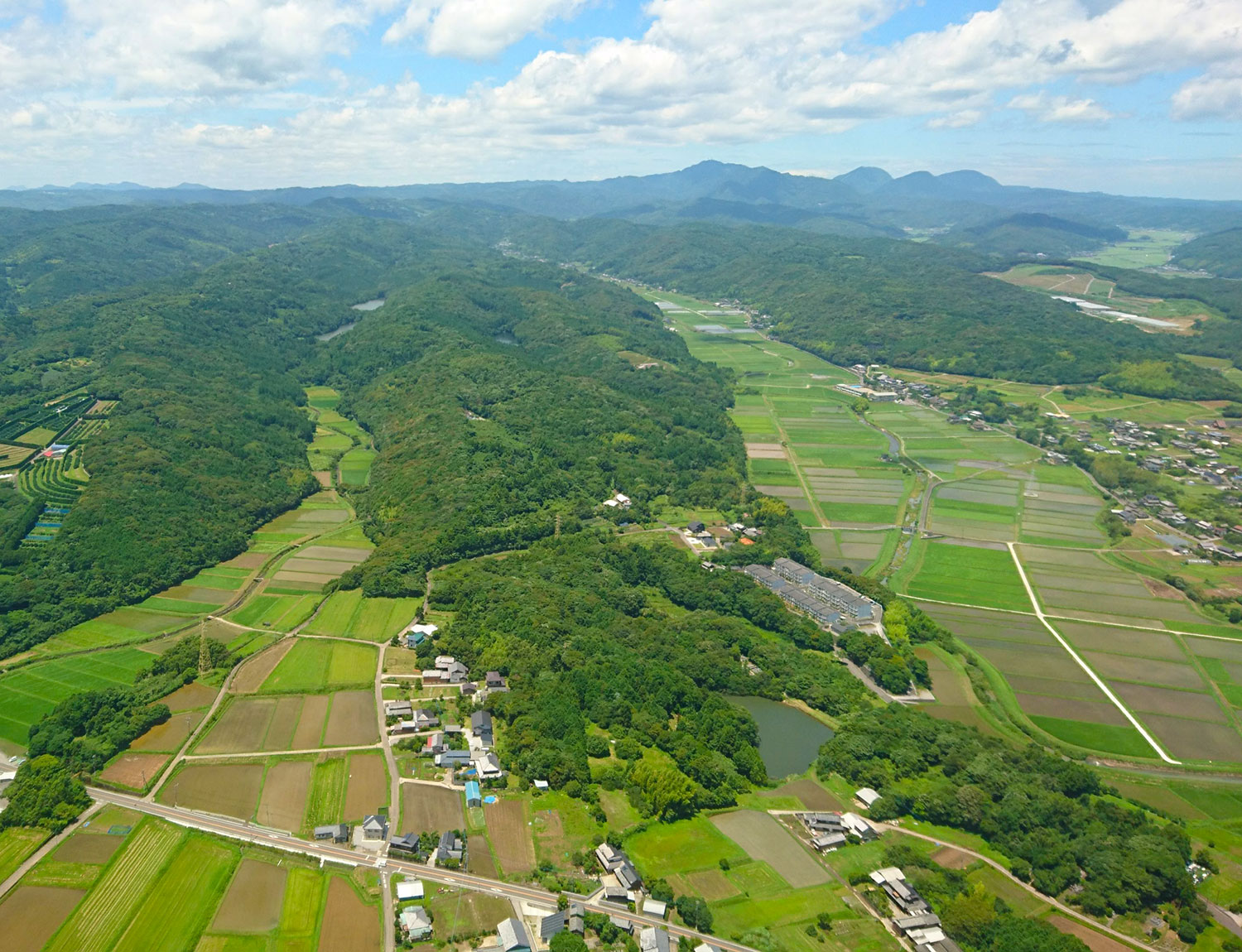
Beppu: Onsen hot springs, art & much more
With more onsen hot springs than anywhere else in Japan, Beppu takes the crown as the nation’s top…

The Kunisaki Peninsula is imbued with a placid spirituality embodied by 1,300 year-old Rokugo-Manzan, an esoteric Buddhist-Shinto religion now uncommon elsewhere in Japan. Quiet country roads and narrower lanes weave through Kunisaki’s beautifully verdant countryside from one atmospheric temples to another, from the sea to the mountains and back again, and through quiet towns, villages and hamlets where the pace of life seems little changed from earlier ages. In recent years, art has brought another intriguing facet to Kunisaki’s charms. A compact circular peninsula, Kunisaki is easily negotiated and more than rewards the time taken to explore it slowly.
Duration: 2 days beginning and ending at Oita Airport.
Day 1 Oita Airport - Imi
Oita Airport, located conveniently on the Kunisaki Peninsula’s east coast, is an ideal spot to start your road trip. Within a short distance of heading inland the surrounding countryside quickly turn into the typical Kunisaki scenery of valleys with forested hillsides overlooking rice paddies. Ruriko-ji, the oldest of the Rokugo-Manzan temples, is known for its collection of disused usu stone mortars and mill stones donated by the locals, 600 year-old sarusberi crape myrtle tree, and very friendly priest.
Beyond lies Futago-ji, Kunisaki’s main temple at the peninsula’s geographic centre. The grounds are extensive and especially attractive when the new green leaf has unfurled and in the autumn when the trees are resplendent in their red, orange and gold foliage.
An intricately winding road leads around Mt. Futago-san to Jobutsu-ji, one of only three temples where the ancient and energetic Shujo-Onie lunar festival is still held on Kunisaki. Nearby is Monjusen-ji, a temple spectacularly located on a hillside below a cliff face. It is well-worth a visit but perhaps a break for something different is in order. We can circle back to Monjusen-ji later.
Head east for the coast and onto rustic Kotori, a specialist coffee roasters. Enjoy a freshly brewed cup here aside the sea and, if peckish, a homemade cake. A few minutes drive beyond is Kunisaki Katachi Kobo, the workshop and gallery of top local ceramicist Katsushi Kakino.
On the way to Imi stop off at the Petro Kasui Kibe park, a memorial to 15th Century-born local who became a Catholic saint. On a low hill overlooking the park is ‘Pulpit’, a Kunisaki Art Project installation, by Tadashi Kawamata that references Kibe’s missionary work.
Enjoy a late lunch either at the Michi-no-eki Kunimi or Touinryo, the gallery and cafe at the centre of Imi’s artistic community. Make sure to take a gentle stroll around this pleasant little port town and visit other galleries here including La Paloma and Susumegusa.
Drive south and inland a few kilometres to Kyu-Sento-ji, the atmospheric ruins of a long gone temple and Itsutsu-ji Fudo, where Anthony Gormley’s contribution to the Kunisaki Art Project, ‘Another Time XX’ looks over Kunisaki and the Seto Inland Sea.
If you still have the legs visit Monjusen-ji before making your way to your evening’s accommodation. Try out an onsen hot spring at either Yunosato Keisen and Akane-no-Sato, which are nearby set deep in the forested mountains here. Otherwise, head back to the coast for the homely Beach Ryoan Shioji, or perhaps take the short ferry journey from Imi across the Seto Inland Sea to Himeshima where you will find Yachiyo-kan and Anzai Ryokan.
Day 2 Imi - Oita Airport
The day starts with a burst of art at Nagasakibana and, further along the coast, at the TeamLab Gallery. The latter is close-by Soba Cafe Yuhi, where you may like to relax over a mid-morning coffee while enjoying more sea views before heading once again inland to, first, the picturesque Tennen-ji and Kawanaka Fudo, another Shujo-Onie festival temple, and then onto the rustically elegant Fuki-ji. Enjoy an early lunch at neighbouring Kaya-no-Ki, which specialises in a Dango-jiru, a popular and delicious Oita delicacy.
Well nourished, journey onto the Kumano Magaibutsu via picturesque Tashibu-no-sho and Makiodo with its very impressive Buddhist statues. You will need some energy to negotiate the steep and uneven steps to the Kumano Magaibutsu but it is well worth the effort to see these towering ancient Buddhist relief carvings, the largest in Japan.
Relax over a coffee and cake at Mamenomonya before journeying on back to Oita Airport.
If you have a day more or so spend it exploring the town centres of both Bungo Takada and Kitsuki, and make a detour to Usa Jingu, one of Japan’s grand shrines and the origin of Kunisaki’s Rokugo-Manzan. For hot spring lovers a dip at Ebisu-dani Onsen is highly recommended.